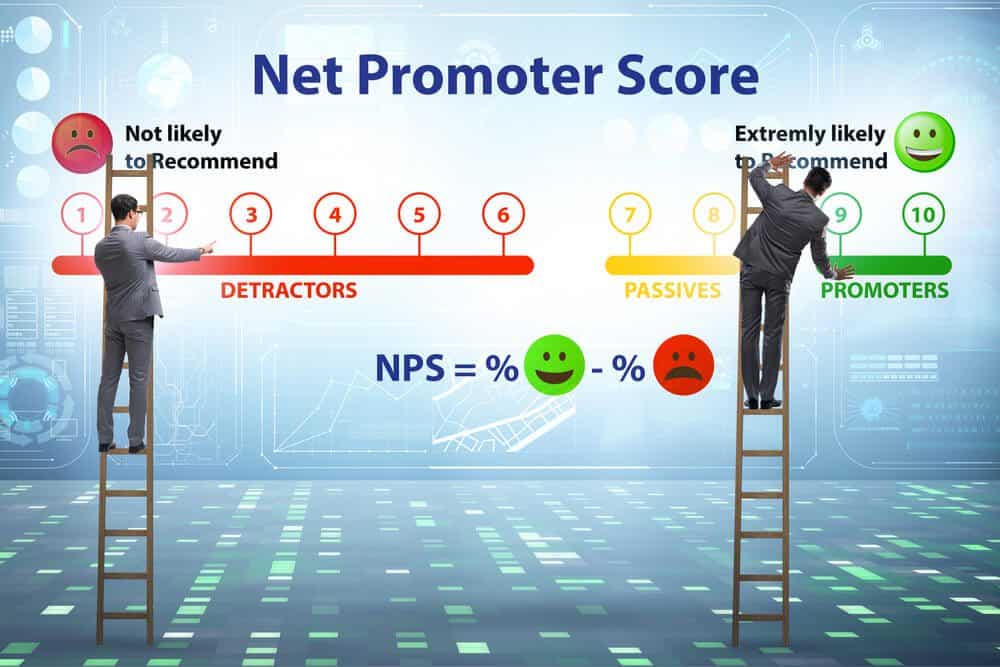
SaaS Customer Support KPIs and Metrics to Keep Them Coming Back for More
Software as a Service (SaaS) customer support addresses user needs with metrics measuring quality and efficiency, which is critical for a SaaS marketing agency. It improves the user experience and identifies improvement areas by measuring satisfaction and optimizing processes, revealing key support KPIs such as:
- First Response Time (FRT).
- Resolution Time.
- Ticket Volume.
- Customer Satisfaction Score (CSAT).
- First Contact Resolution (FCR) Rate.
- Net Promoter Score (NPS).
- Customer Effort Score (CES).
- Return on Investment (ROI) for Support.
- Churn Rate and Churn Cost.
- Customer Lifetime Value (CLTV).
Learn more about these KPIs and understand the challenges of SaaS marketing. Let’s go!
Want to know how we help SaaS businesses stand out from the crowd? Watch this video to learn how DAP makes it happen!
First Response Time (FRT)
FRT measures the average time taken to respond to a customer inquiry or ticket. A lower FRT indicates faster customer support and improved satisfaction.
Measuring FRT in customer support involves tracking when a customer inquiry or ticket is received and when the support team delivers the initial response. Here is how to measure FRT:
- Calculate FRT manually by recording the timestamps when tickets are received and when the first response is sent. Then, compute the average response time across all interactions within a specific time frame such as a day, week, or month.
- Utilize specialized help desk or ticketing systems such as Zendesk, Freshdesk, or Help Scout. These platforms offer built-in reporting and analytics features that automatically track and calculate FRT metrics. They provide dashboards and reports displaying average response times, enabling easy monitoring and analysis.
- Consider customer relationship management (CRM) systems, such as Salesforce or HubSpot. These offer customer support modules that can track FRT. They allow integration with email systems or help desk platforms to measure response times and generate reports.
- Use tools, such as Google Analytics or specialized performance measurement software, to track response times. They may require custom configurations to monitor and measure FRT accurately based on predefined parameters.
These tools track FRT and offer insights into response trends, identify areas for improvement, and help customer support teams optimize their response strategies to enhance customer satisfaction.
Selecting the appropriate tool depends on the volume of customer inquiries, the complexity of support operations, and the level of analytics and reporting that the SaaS company needs.
Resolution Time

Tracks the average duration to resolve customer issues from when they are reported. Lower resolution times signify efficient problem-solving and an enhanced user experience.
Measuring resolution time in SaaS customer support involves tracking the duration taken to resolve customer issues or tickets from when they are reported until resolved. Measure resolution time with these SaaS marketing best practices.
- Utilize dedicated ticketing systems such as Zendesk, Freshdesk, Jira Service Desk, or Help Scout. These platforms automatically track the time from when a ticket opens to when it closes. They offer reporting features displaying average resolution times, ticket status, and other relevant metrics.
- Use CRM systems with built-in customer support modules or integrations with help desk platforms. They enable tracking customer issues and resolutions, providing insights into resolution times within the CRM environment.
- Employ performance measurement and analytics tools such as Google Analytics, Microsoft Power BI, or Tableau. Custom configurations may be needed to monitor resolution times by extracting data from ticketing systems or databases and creating reports or dashboards for analysis.
- Include spreadsheets for smaller operations or custom tracking. Agents record the time taken for issue resolution, and calculations determine average resolution times.
Ticket Volume
Ticket volume measures the total number of customer support inquiries or tickets received within a specific period. Analyzing ticket volume helps in managing workload and resource allocation.
Measuring ticket volume in SaaS customer support involves tracking and quantifying the total number of customer inquiries, issues, or tickets received in a specific period. Find out the ticket volume through these strategies:
- Utilize dedicated help desks or ticketing systems. These platforms automatically capture and record each customer inquiry or ticket, providing metrics and reports showing ticket volumes over time.
- Consider CRM systems, such as Salesforce or HubSpot, to integrate customer support modules or offer integrations with help desk platforms. These can track customer interactions, including ticket creation, within the CRM environment.
- Track using performance analytics tools like Google Analytics, Microsoft Power BI, or Tableau. These tools can pull data from ticketing systems or databases to create custom reports or dashboards displaying ticket volume trends and patterns.
- Monitor using spreadsheets or databases for smaller-scale operations or specific tracking needs. Support agents log each customer inquiry or ticket, and calculations can be done to analyze ticket volumes.
Customer Satisfaction Score (CSAT)

CSATs are surveys or feedback-based scores that measure the satisfaction level of customers with the support received. A high CSAT indicates contentment and happy customers.
Measuring CSAT in SaaS customer support involves collecting customer feedback to assess their satisfaction levels with the help they receive. Measure this SaaS metric with these strategies:
- Send post-interaction surveys or feedback forms to customers after resolving their support inquiries. These surveys typically include a simple rating scale or multiple-choice questions asking customers to rate their satisfaction with the support received.
- Utilize email systems or customer communication platforms to send automated survey emails to customers' post-support interactions. These enable customization and scheduling of surveys to collect CSAT feedback.
- Implement specialized customer feedback tools such as SurveyMonkey, Qualtrics, or Typeform. These tools offer customizable survey templates, automate survey distribution, and provide analytics and reporting features to track CSAT scores.
- Take advantage of help desk platforms that have built-in survey functionalities. These allow the automatic sending of satisfaction surveys at the end of support interactions and offer reporting on CSAT scores within the platform.
- Integrate customer feedback tools or survey platforms with CRM systems such as Salesforce or HubSpot. This integration allows the collection of CSAT data and customer feedback within the CRM environment.
First Contact Resolution (FCR) Rate
FCR rate measures the percentage of customer inquiries resolved during the initial contact. A high FCR rate signifies efficient support processes. Measuring the FCR rate in SaaS customer support involves tracking the percentage of customer inquiries or issues resolved during the initial interaction without requiring further follow-ups.
Consider these SaaS marketing agency strategies and tools:
- Utilize dedicated ticketing systems to track the inquiries resolved during the first interaction and provide reports on FCR rates.
- Use CRM systems, such as Salesforce or HubSpot, to integrate with help desk platforms or offer built-in support modules. They enable tracking customer interactions and resolutions, allowing the calculation of FCR rates within the CRM environment.
- Take advantage of performance measurement and analytics tools such as Google Analytics, Microsoft Power BI, or Tableau. These tools can be customized to track FCR rates by extracting data from ticketing systems or databases and creating reports or dashboards for analysis.
- Implement quality assurance systems or call monitoring tools that assess customer interactions. These systems track the cases resolved during the initial contact and help calculate FCR rates based on monitored interactions.
Employing manual tracking and reporting using spreadsheets or databases may be used for smaller operations or specific tracking needs. Agents record and track cases resolved in the first contact, enabling the calculation of FCR rates. Hiring a fractional chief marketing officer (CMO) for SaaS can improve marketing campaigns through accurate and efficient monitoring.
Net Promoter Score (NPS)

NPS gauges customer loyalty by assessing customers' likelihood of recommending the product or service to others. Measuring NPS in SaaS customer support involves collecting customer feedback to gauge their loyalty and likelihood of recommending the product or service to others. Monitor NPS using the following tactics:
- Send out NPS surveys containing a single question that asks customers how likely they are to recommend the product or service on a scale of 0 to 10. Customers are then categorized into Promoters (scores 9–10), Passives (scores 7-8), or Detractors (scores 0-6).
- Utilize email platforms or survey tools. These tools enable the automated sending of NPS surveys to customers post-interaction or at specified intervals.
- Integrate NPS survey tools or feedback platforms with CRM systems to collect NPS data within the CRM environment and track customer sentiments over time.
- Implement specialized feedback collection platforms such as Delighted, Medallia, or AskNicely that focus on NPS surveys and offer advanced reporting, analytics, and sentiment tracking features.
- Integrate NPS surveys within the SaaS product interface or application using in-app survey tools, such as Apptentive or Intercom. These tools allow the real-time collection of NPS feedback from users directly within the product.
By utilizing these tools and methods, SaaS companies can effectively gather NPS feedback, categorize customers based on their responses, analyze loyalty levels, and track changes in customer sentiment over time.
Customer Effort Score (CES)
CES measures the ease of customer interaction with customer support. A lower CES implies a more straightforward support experience. Calculating CES in SaaS customer support involves assessing the comfort of the customer support experience. Measure CES using these techniques:
- Utilize CES surveys containing a single question that asks customers how easy it was to resolve their issue or complete their task. Typically, the scale ranges from "very difficult" to "very easy."
- Use survey platforms to create and distribute CES surveys. These tools enable the automated distribution of CES surveys via email or after a customer support interaction.
- Integrate survey tools with CRM systems to collect CES data within the CRM environment, enabling correlation with customer data.
- Implement a specialized feedback collection platform for advanced reporting, analytics, and sentiment tracking features.
- Utilize point-of-service CES surveys that are integrated into the support interaction, such as after a live chat session or within the support ticketing system. These tools can provide options for in-ticket or post-chat surveys.
- Integrate CES surveys within the SaaS product interface or application using in-app survey tools, such as Apptentive or Intercom. These tools allow real-time collection of CES feedback directly within the product.
By employing these tools and methods, SaaS companies can effectively gather CES feedback, measure the ease of customer interactions, and identify areas for improvement in the support process. They also enhance the overall customer experience.
Return on Investment (ROI) for Support

Evaluate the financial return from investments made in customer support resources and initiatives. Measuring ROI in SaaS customer support involves evaluating the economic benefits of investments in customer support resources and initiatives. It takes the following strategies to measure ROI:
- Calculate the total costs associated with customer support, including salaries, software, infrastructure, training, and other operational expenses.
- Assess the revenue generated due to improved customer satisfaction, reduced churn, increased upsells or cross-sells, and expanded customer lifetime value (CLTV) attributable to enhanced support efforts.
- Measure the effect of support on customer retention rates, churn reduction, and customer loyalty. Identify the correlation between improved support and increased customer retention.
- Evaluate how improved support contributes to increasing CLTV by enhancing the value and longevity of customer relationships.
- Utilize customer feedback and satisfaction scores (such as CSAT or NPS) to gauge the impact of support quality on customer satisfaction, loyalty, and willingness to recommend the product.
- Use analytics platforms such as Google Analytics, Microsoft Power BI, or customer support software analytics features to track and analyze support-related metrics and their correlation with business outcomes.
- Integrate customer support data with CRM systems to correlate support efforts with customer interactions, sales, and revenue data.
- Develop custom reports or dashboards that showcase the financial impact of support initiatives by aligning support metrics with revenue and cost data.
- Calculate the ROI using the formula:
[(Gain from Investment - Cost of Investment) / Cost of Investment] x 100.
The gain includes increased revenue or savings attributed to improved support, while the cost involves support-related expenditures.
Churn Rate and Churn Cost
Churn rate measures the percentage of customers who discontinue their subscription, while churn cost evaluates the financial impact of lost customers, factoring in revenue and acquisition costs.
Measuring churn rate and churn cost in customer support involves evaluating the percentage of customers who discontinue their subscription or stop using the service and calculating the associated financial impact. Measure the churn rate and cost with the following:
- Measure the Churn Rate using this formula:
Churn Rate = (Customers Lost during a Period / Total Customers at the Beginning of the Period) x 100
- Track the number of customers who cancel their subscriptions or fail to renew within a specified period (monthly, quarterly, or annually).
- Use customer databases, subscription management systems, or CRM platforms to track and analyze customer status changes.
- Measure Churn Cost as follows:
Churn Cost = (Churned Customers * Average Revenue per Customer) + Costs to Replace Lost Customers
- Calculate the financial effect of churn by considering lost revenue due to departing customers and costs incurred in acquiring new customers to replace them.
- Utilize financial data, revenue reports, and customer acquisition costs to estimate the monetary influence of churn.
- Use CRM systems for insights into customer status changes, enabling churn rate calculations.
- Include subscription management tools such as Chargify, Recurly, or Stripe. These offer churn analytics and reporting capabilities, allowing tracking of customer cancellations or non-renewals.
- Integrate analytics tools to analyze customer data and calculate churn rates by segmenting and tracking customer behavior.
- Develop custom reports or dashboards that track customer churn metrics and provide insights into the reasons behind customer departures.
- Gather customer feedback through surveys or exit interviews to understand the reasons for the churn.
- By employing these methods and tools, SaaS companies can effectively measure churn rate and churn costs, identify reasons for customer departures, and take proactive measures to reduce churn.
Customer Lifetime Value (CLTV)

CLTV predicts the total revenue that a customer will generate throughout their relationship with the company, considering support quality's influence on retention. Measuring CLTV in SaaS customer support involves assessing the total value that a customer brings to a business over the entire relationship duration. These strategies help measure CLTV:
- Use the formula for CLTV:
CLTV = (Average Revenue per Customer) x (Average Customer lifespan)
- Determine the average revenue that a customer generates over their entire lifespan as a subscriber.
- Calculate the average customer lifespan by analyzing historical customer data to determine how long customers typically stay subscribed.
- Use CRM systems to gather and analyze customer data, including purchase history, subscription lengths, and customer interactions.
- Analyze customer behavior, spending patterns, and historical retention rates to estimate CLTV.
- Take advantage of subscription management platforms for insights into customer subscription data, billing history, and recurring revenue. These platforms aid in CLTV calculations.
- Utilize customer segmentation tools or analytics platforms to segment customers based on behavior and spending, helping to estimate CLTV for different customer segments.
- Implement predictive analytics models or machine learning algorithms to forecast CLTV. Advanced analytics tools or platforms with predictive capabilities can provide more accurate predictions based on customer behavior patterns.
- Leverage financial reporting tools or accounting software to track and analyze customer-related revenue and expenses, aiding in more accurate CLTV estimations.
- Develop custom reports or models that combine various customer data sources to accurately calculate and project CLTV.
By using these methods and tools, SaaS companies are able to effectively measure CLTV, understand the long-term value of their customers, and identify high-value customers. They can tailor their support strategies to improve customer retention and maximize the overall lifetime value of their customer base.
These metrics and KPIs, including ROI, churn rate, and associated costs, provide valuable insights into customer support efforts' efficiency, effectiveness, and financial impact. Retention is another critical aspect of customer support, as it intricately links with SaaS customer support, both rooted in fostering engagement.
Summing Up
SaaS customer support KPIs and metrics, including FCR, CSAT, Churn Rate, and CLTV, are essential in evaluating customer satisfaction, retention, and the overall health of support operations. However, while these metrics are crucial customer experience and success indicators, they represent only a fraction of the broader SaaS marketing landscape.
By focusing solely on customer support metrics, companies often overlook the significance of a holistic approach. This disregards other crucial aspects such as acquisition, engagement, and product innovation.
Neglecting this holistic view can lead to missed opportunities, loss of revenue, and hindered growth. Avoid these by partnering with an expert SaaS marketing agency to keep a company at the top of the search engine results pages (SERPs) list and retain customers at the bottom of the sales funnel. Contact Digital Authority Partners (DAP) today.
Want To Meet Our Expert Team?
Book a meeting directly here




